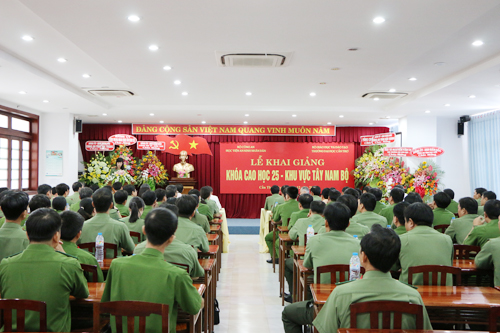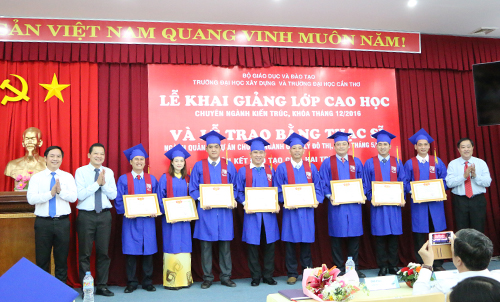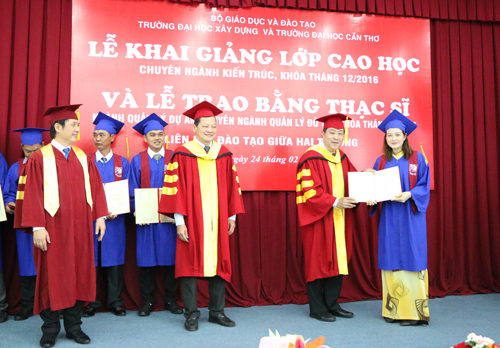
Tên đề tài: “Nghiên cứu dịch tễ học và biện pháp phòng trị bệnh giun tròn đường tiêu hóa trên chó tại một số tỉnh Đồng bằng sông Cửu Long”.
Tác giả: Nguyễn Thị Chúc, Khóa: 2014
Chuyên ngành: Bệnh lý học và chữa bệnh vật nuôi; Mã số: 62640102. Nhóm ngành: Nông, lâm nghiệp và thuỷ sản.
Người hướng dẫn chính: PGS.TS. Nguyễn Văn Diên - Trường Đại học Tây Nguyên
- Tóm tắt nội dung luận án
Đề tài được thực hiện nhằm nghiên cứu dịch tễ học và biện pháp phòng trị bệnh giun tròn đường tiêu hóa trên chó tại một số tỉnh Đồng bằng sông Cửu Long. Qua phương pháp kiểm tra 1.727 mẫu phân và mổ khám 1.152 con chó để tìm sự hiện diện giun tròn trên chó tại 6 tỉnh, thành như: An Giang, Đồng Tháp, Bến Tre, Sóc Trăng, Kiên Giang và TP. Cần Thơ. Tỷ lệ nhiễm giun tròn qua xét nghiệm phân ở các tỉnh khảo sát từ năm 2014-2018 là 62,77%, và qua mổ khám 71,70%. Có 8 loài giun tròn được tìm thấy thuộc 6 giống là Ancylostoma caninum, Ancylostoma ceylanicum, Ancylostoma braziliense, Uncinaria stenocephala, Toxocara canis, Toxascaris leonina, Trichocephalus vulpis và Spirocerca lupi. Trong đó A. caninum tỷ lệ nhiễm cao nhất (69,97%). Tỷ lệ nhiễm giun tròn giảm theo tuổi chó; chó từ 1-12 tháng tuổi có tỷ lệ nhiễm cao nhất (66,48%), kế đến là chó 13-24 tháng tuổi (62,33%) và giảm thấp ở chó >24 tháng (55%). Chó nội và lai có tỷ lệ nhiễm 72,59%, cao hơn chó ngoại (51,20%), chó nuôi theo phương thức thả rông có tỷ lệ nhiễm (78,06%) cao hơn nuôi nhốt (44,54%). Mùa mưa chó nhiễm cao hơn (74,30%) mùa nắng (52,12%). Phương thức vệ sinh tắm chải và định kỳ tẩy trừ làm hạn chế tỷ lệ nhiễm giun tròn. Có mối tương quan giữa số trứng giun A. caninum trong một gram phân và tổng số giun cái trong cơ thể chó theo phương trình hồi quy Y= 11.22+0,005X.
Định danh giun tròn bằng kỹ thuật sinh học phân tử PCR-RFLP và giải trình tự gene ITS-1, cox-1 đã phát hiện 5 loài A. caninum, A. ceylanicum và A. braziliense, T. canis và S. lupi. Phân tích cây phả hệ thì A. caninum ở vùng ĐBSCL có quan hệ di truyền gần gũi với A. caninum ở Trung Quốc (KJ840827) và vùng hạ lưu sông Mekong (LC177194). Loài A. ceylanicum tại vùng ĐBSCL có quan hệ di truyền gần gũi với A. ceylanicum có nguồn gốc trên người ở vùng Đông Nam Á (Malaysia và Thái Lan). Loài S. lupi và loài T. canis có độ tương đồng cao lần lượt là 97,2% và 99%-100 % so với các mẫu tham chiếu cùng loài.
Thời gian hoàn thành vòng đời của A. caninum là 27,7 ngày. Chó nhiễm A. caninum có triệu chứng gầy ốm, tiêu chảy có máu, nôn mửa. Ở niêm mạc ruột xuất huyết, thành ruột non bị bong tróc lẫn với máu và dịch ruột. Các tế bào niêm mạc ruột bong tróc, lông nhung ruột bị đứt nát, tăng bạch cầu ái toan ở các ổ viêm. Số lượng hồng cầu, hàm lượng huyết sắc tố và tỷ khối hồng cầu giảm; số lượng bạch cầu tăng so với chó không nhiễm.
Thuốc B (pyrantel) liều 120 -140 mg/kg thể trọng và thuốc A (levamisol) liều 180mg/kg thể trọng, có hiệu quả cao trong tẩy trừ giun móc và giun đũa sau 5-10 ngày.
- Những kết quả mới của luận án:
Đây là công trình xác định các đặc điểm dịch tễ học và các yếu tố nguy cơ liên quan đến tỷ lệ nhiễm giun tròn ký sinh ở đường tiêu hóa chó tại các tỉnh ĐBSCL.
Xác định loài giun móc (A. caninum, A. braziliense, A. ceylanicum), giun xoăn thực quản (S. lupi) và giun đũa (T. canis) trên chó ở ĐBSCL bằng kỹ thuật PCR và giải trình tự gene.
Công trình nghiên cứu hoàn chỉnh vòng đời của loài giun móc A. caninum và mô tả bệnh lý học của giun móc A. caninum gây ra trên chó tại ĐBSCL
- Các ứng dụng/khả năng ứng dụng trong thực tiễn, các vấn đề cần tiếp tục nghiên cứu:
Thesis title: Research on epidemiology and prevention and treatment of gastrointestinal roundworm disease in dogs in some provinces of the Mekong Delta
Major: Pathology and treatment of animals
Code: 62 64 01 02
PhD student's name: NGUYEN THI CHUC
Academic supervisor: Assoc. PhD. Nguyen Van Dien
Training units: Can Tho University
- Tóm tắt nội dung luận án
The study was carried out to study the epidemiology and prevention measures of gastrointestinal roundworm disease in dogs in some provinces of the Mekong Delta. Through testing 1727 stool samples and dissecting 1152 dogs to find the presence of roundworms in dogs in 6 provinces and cities such as: An Giang, Dong Thap, Ben Tre, Soc Trang, Kien Giang and Can Tho City. The rate of roundworm infection in surveyed areas from 2014-2018 was 62.77% and through dissection was 71.70%. There are 8 species of roundworms, belonged to 6 genera: Ancylostoma caninum, Ancylostoma ceylanicum, Ancylostoma braziliense, Uncinaria stenocephala, Toxocara canis, Toxascaris leonina, Trichocephalus vulpis and Spirocerca lupi. Among them, A. caninum has the highest infection rate of 69.97%. The prevalence of roundworm infections in dogs decreased by age. Dogs from 1-12 months old had the highest infection rate (66.48%), followed by dogs 13-24 months old (62.33%) and the lowest one was in dogs >24 months (55%). Domestic and crossbred dogs had the infection rate of 72.59% that was higher than foreign dogs (51.20%), free- ranging dogs had a higher infection rate (78.06%) than in captivity dogs (44.54%). Roundworm infection was recorded higher in rainy season (74.30%) than in dry season (52.12%). The method of cleaning, bathing, and periodically deworming reduced the rate of roundworm infection.
There was a correlation between the number of A. caninum worm eggs in one gram of feces and the total number of female worms in the dog's body according to the regression equation Y= 11.22+0.005X
Molecular identification of roundworms were performed by using PCR, PCR-RFLP techniques . ITS-1, cox-1 gene sequencing, detected 5 species of ITS-1 and cox-1 gene were sequenced to confirm the presence of 5 species A. caninum, A. ceylanicum, A. braziliense, T. canis and S. lupi.
Analysis of the phylogenetic tree showed that A. caninum in the Mekong Delta had a close relation to A. caninum in China (KJ840827) and the Lower Mekong River (LC177194). The species A. ceylanicum in the Mekong Delta is genetically closely related to A. ceylanicum which originated in humans in Southeast Asia (Malaysia and Thailand). S. lupi and T. canis showed a high similarity of 97.2% and 99%-100 %, respectively, compared with reference species in Genbank
The life cycle of A. caninum was 27.7 days. Dogs infected with A. caninum, that had symptoms of emaciation, bloody diarrhea, and vomiting. In the intestinal mucosa hemorrhagic, the wall of the small intestine is sloughed off mixed with blood and intestinal fluid. Intestinal mucosal cells are sloughed off, intestinal villi are severed, and eosinophils are increased in inflammatory foci. Decreased red blood cell count, hemoglobin content and red blood cell mass; white blood cell count increased compared with uninfected dogs.
Drug B (pyrantel) at a dose of 120 -140 mg/kg body weight and drug A (levamisol) at a dose of 180 mg/kg body weight, are highly effective in eradicating hookworms and roundworms after 5-10 days.
- Những kết quả mới của luận án:
- This is the first study in the Mekong Delta region to determine the epidemiological characteristics and risk factors related to the prevalence of parasitic roundworm infection in the gastrointestinal tract of dogs in the Mekong Delta provinces. Identification of hookworms (A. caninum, A. braziliense, A. ceylanicum), esophageal curly worms (S. lupi) and roundworms (T. canis) in dogs in the Mekong Delta by PCR and gene sequencing.
- The life cycle of hookworm A. caninum was completely studied and described the pathology of hookworm A. caninum in dogs in the Mekong Delta.
- Xem chi tiết nội dung luận án
- Xem thông tin đăng tải tại Website Bộ giáo dục và Đào tạo. (Nhập tên NCS vào ô tìm kiếm)




















